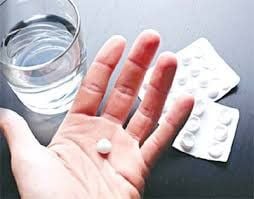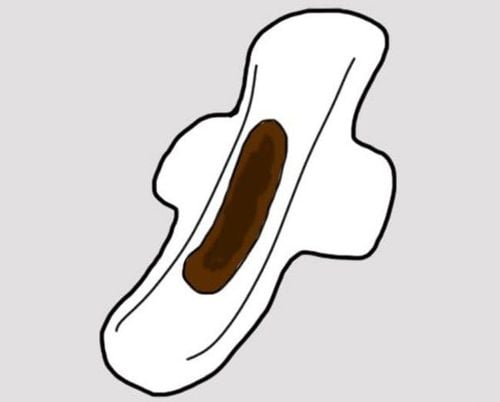This is an automatically translated article.
Sexual dysfunction in both men and women is the cause of unhappiness in marital life between couples. So what measures are there to diagnose and treat sexual dysfunction?1. Overview of sexual dysfunction
In normal sexual activity there are 4 stages including physical satisfaction, desire, interest and orgasm. Sexual dysfunction is a disorder of the sex drive that makes it difficult or impossible for an individual or a couple to engage in any stage of a sexual activity for a minimum of 6 months. month.
In one study, sexual dysfunction was very common (43% in women and 31% in men). This is a topic that most people are embarrassed or confused about when it comes to talking or sharing. Fortunately, most cases of sexual dysfunction are treatable if you talk to your doctor and partner about the problem.
Sexual dysfunction can affect any age and any gender. Those most often affected are the elderly, which may be associated with a decline in health and aging.
2. Causes of sexual dysfunction
Causes of sexual dysfunction can stem from physical or psychological problems, hormones, hormones,...
2.1 Physical causes Physical conditions can cause Problems with sexual dysfunction include diabetes, heart disease, neurological disease, hormonal imbalances, menopause plus chronic conditions such as kidney disease, liver failure, alcoholism or drug abuse. In addition, the side effects of certain medications, including some antidepressants, can affect libido and sexual function.

Rối loạn chức năng tình dục được hình thành bởi nhiều yếu tố khác nhau
2.2 Psychological causes Psychological factors such as stress, work pressure, sexual performance, marital or relationship problems, depression, guilt, effects of emotional trauma Past sex is the cause of sexual dysfunction.
Long-term conflict with a partner over sex or other aspects of the relationship can reduce sexual responsiveness. Cultural and religious issues, problems with body image also cause sexual dysfunction.
2.3 Hormones Lower estrogen levels after menopause can lead to changes in genital tissues and sexual responsiveness. Reduced estrogen leads to decreased blood flow to the pelvic area, which can lead to less genital sensations, as well as more time needed for arousal to build up and orgasm.
The vaginal lining also becomes thinner and less elastic, especially if you are not sexually active. These factors can lead to painful intercourse, decreased sex drive.
Your body's hormone levels change after giving birth and during breastfeeding, which can lead to vaginal dryness and affect your wife's desire to have sex.
Some factors increase the risk of sexual dysfunction including: depression or anxiety; heart and blood vessel disease; neurological conditions, such as a spinal cord injury or multiple sclerosis; gynecological conditions, such as vulvar atrophy, infection or lichen sclerosus...
3. Symptoms of sexual dysfunction
Patients will experience different symptoms depending on the type of sexual dysfunction experienced. Specifically:
Decreased libido: The most common of sexual dysfunctions in females is related to lack of sexual interest and unwillingness to have sex; Sexual arousal disorder: The spouse's libido may be intact, but they have difficulty with arousal or cannot become aroused to maintain arousal during sexual activity; Orgasm Disorder: Spouse has persistent or recurrent difficulty achieving orgasm after sufficient sexual stimulation and continuous stimulation; Sexual pain disorder: In this case, the wife often experiences pain related to sexual arousal or vaginal contact.

Rối loạn đau tình dục, đau khi kích thích tình dục hoặc tiếp xúc âm đạo là triệu chứng của bệnh rối loạn chức năng tình dục
4. How is sexual dysfunction diagnosed?
To diagnose sexual dysfunction, your doctor may take your medical history, do a physical exam, and perform a physical exam, making a thorough assessment of your symptoms. Your doctor will do a physical exam (pelvic exam) to evaluate the health of your reproductive organs. Do a Pap test to detect changes in the cells of your cervix (check for cancer or pregnancy). precancerous conditions).
The doctor can also advise the patient to go to a gynecologist for cases that can be treated with surgery, or a psychological/psychiatric examination if emotional problems are the cause of sexual dysfunction in patients. Even in cases where the patient is a victim of sexual abuse, the doctor may refer to community centers.
Assess your level of concern about sex, as well as other factors (such as fear, anxiety, past trauma/sexual abuse, alcohol or drug abuse problems) help your doctor understand the underlying cause of the problem and make appropriate treatment recommendations.
5. Treatment of sexual dysfunction
The success of treating sexual dysfunction depends on the underlying cause. If the physical dysfunction is treatable or reversible, the chances of successful treatment are great. In cases where mild dysfunction is related to an emotional problem such as stress, fear, or anxiety, it is often successfully treated with counseling, education, and improved communication between the spouses.
The ideal approach to treating sexual dysfunction depends on the effort between the patient, the doctor and the therapist. Most types of sexual problems can be reversed by treating the underlying physical or psychological problems. Other treatment strategies focus on the following:
Counseling and education: Education here refers to human anatomy, sexual function and the normal changes associated with aging, as well as behavior microsexuality and appropriate response. This can help patients overcome concerns about sexual function and performance; Increased arousal: Using methods to increase sexual arousal, using sexually explicit materials (videos or books), masturbation, and changing sexual habits; Provide distraction techniques: Erotic or non-erotic fantasies; exercises with intercourse; music, video or television can be used to increase relaxation and eliminate anxiety; Encourage physically stimulating behaviors that do not include intercourse: Massage, for example, can be used to promote comfort and increase communication between partners; Limit painful positions: Use sexual positions that allow a woman to control the depth of penetration to reduce pain. Vaginal lubricants can help relieve pain from friction, and a warm bath before intercourse can increase relaxation.

Khi xuất hiện các vấn đề rối loạn chức năng tình dục, người bệnh nên đến cơ sở y tế để được điều trị sớm
Women with sexual dysfunction problems can choose the package of examination and counseling on female sexual dysfunction - provided by Vinmec International General Hospital - as the most optimal solution.
Packages to help with counseling, addressing the causes and treatment of sexual dysfunction include:
Desire problems; Agitation problems; Orgasm problems; Painful intercourse (temporary or permanent) or vaginal spasms. This is a completely new examination package in Vietnam, proposed by Vinmec and following current international standards. Patients will be examined and consulted by senior, qualified and technical experts who are well-trained abroad; provide effective treatment solutions. The probes and tests are performed with modern and precise equipment. In particular, Vinmec ensures respect for the privacy and confidentiality of customers participating in the Examination Package.
For detailed advice on the package of examination and advice on female sexual dysfunction at Vinmec, please contact HOTLINE 0899.648.761.













